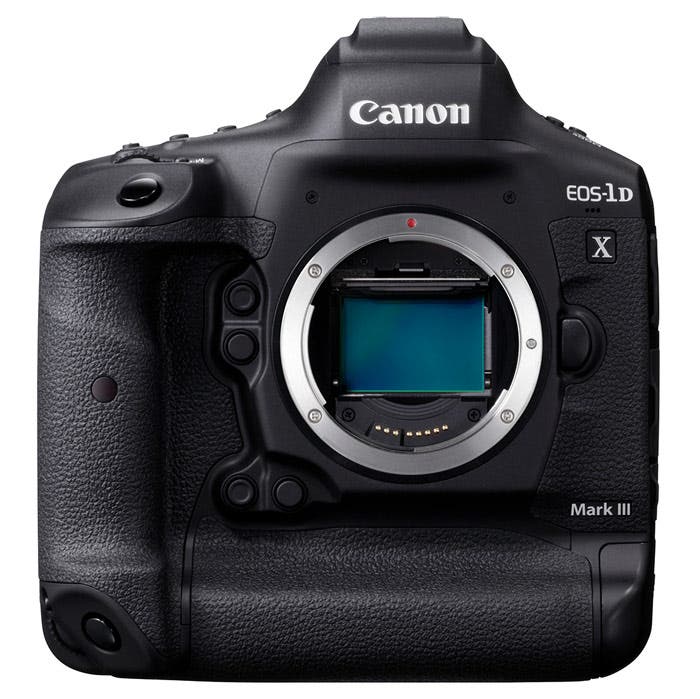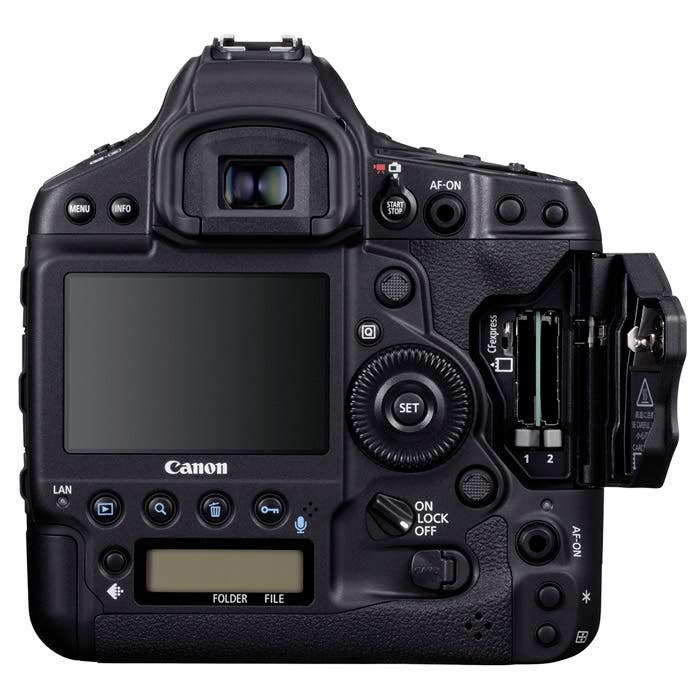I shot sports for many years (mostly for Sports Illustrated) and now primarily shoot and teach concert photography as I travel with bands on tour around the world. Both kinds of work require top-of-the-line camera gear that can keep up with the demands I place on it. The Canon EOS 1Dx Mark II has been my go-to body for nearly four years and I had no complaints.
Yet somehow, Canon has made it better. I’ve been using the new Canon EOS 1D X Mark III (announced today at CES 2020) for a few weeks now, and it boasts new features, while also offering big improvements for both still and video shooters. It’s pretty much the same form factor as the Mark II, but is actually a little bit lighter. Yes, it shaves off a few ounces, but that’s just the start of the upgraded features.
Key Features:
- New 20.1 Megapixel full-frame CMOS sensor, with new low pass filter
- New DIGIC X Image Processor (ISO range of 100-102400, expandable to 50-819200)
- New 191-point AF System
- Dual Pixel CMOS AF, with up to 3869 Manual AF Positions, and up to 525 Automatic Positions.
- High-Speed Continuous Shooting of up to 16 fps (20 fps in Live View with AF/AE tracking)
- Maximum Burst Rate of 1000 images or more
- Dual CFexpress Card Slots.
- 4K 60p with Canon Log, 10-bit 4:2:2 and 5.5K RAW Video Internal Recording
- Built-in Wi-Fi, Bluetooth, and GPS Technology
- Dust- and Weather-resistant



For photographers like me who shoot action and movement of any kind, you want the 1D X Mark III for the new autofocus system. The camera has a deep learning database with head detection built in. What that means is that it’s not just looking for facial features, but also body shapes, so it locks focus onto your subject’s head even when the person is turned around or wearing a helmet that obscures their face. The AF system is completely redesigned and has 28 times the sensitivity as the previous model. In other words, it’s looking at a lot more of the details in the image — even in between the traditional focus points — so it can focus more accurately.

There’s a new smart controller built onto the back autofocus button so you can easily and quickly move your focus point around without lifting your thumb off of the button. The screen is also full-touch so you can make changes to your settings and pinch to zoom in on a photo just like you’d expect.

Everything works even faster with this camera thanks to the new DIGIC X Image Processor. You can shoot 16 frames per second when using the optical viewfinder, and a whopping 20 fps when shooting on live view with the mechanical or electronic shutter (which also gives you eye-AF capabilities). I don’t know how the camera moves so much data as quickly as it does, but the dual CF Express card slots will pretty much guarantee that you never hit the buffer and can just keep shooting. Yes, it’s a new card format, but it’s incredibly fast, and thankfully, the same type in both slots. No more carrying multiple card readers.
The ISO range is 100-102,400 (expandable to 50-819,200), and while I’m not sure I’d ever shoot at 819,200 ISO, the images are easily a stop or two improved from the Mark II. I’ve made images at 12,800 ISO that look really good. For my concert shoots, I can use the 100-400mm lens at f/5.6 and still get very fast shutter speeds at high ISOs.

Now, huge news for video shooters. You can shoot 5.5K RAW or 4K 60p full frame with no crop using Canon log. And you can save all of those large files internally to the card without using an external field recorder. Yay! Since the new processor can pull data off of the sensor even faster than before, rolling shutter is drastically minimized. Even battery life is improved at more than twice the previous model, despite using the exact same battery (thank you, Canon!).
There’s a new 20.1 megapixel sensor that gives you a 5472 X 3648 pixel file and features a newly designed low pass filter so your images will look more sharp. You can optionally shoot to HEIF format, which is a 10-bit file at roughly half the size of an equivalent JPEG image. There are some other benefits of shooting HEIF, including higher dynamic range imaging for still photos, but I’m just starting to play around with those files since I primarily shoot RAW.
Since you can choose to shoot with the mechanical or electronic shutter, this DSLR camera has a completely silent mode so you can shoot with zero sound. And I mean zero sound. This is pretty awesome if you’re in a sensitive environment where shutter noise would be a disruption.

Lastly, this is the first EOS 1D series body with built-in Bluetooth and Wi-Fi. The advanced networking functions are geared towards agency, event, and sports photographers who need networking abilities, whether it’s a connection to a smart phone or a secure FTP server through an encrypted network.
Look, I’m old enough to remember the days when we were limited to 36 frames on a roll of film and had to manually follow-focus on the athletes as they ran towards us. We were lucky to have half of our frames in focus. With the new AF system built into the Canon 1D X Mark III, along with the crazy fast frames per second and beautiful high ISO, there are no limitations anymore. If you can imagine it, you can capture it.
The Canon EOS-1D X Mark III is available for preorder now, with a CFexpress Card & Reader bundle kit, for at Adorama.






